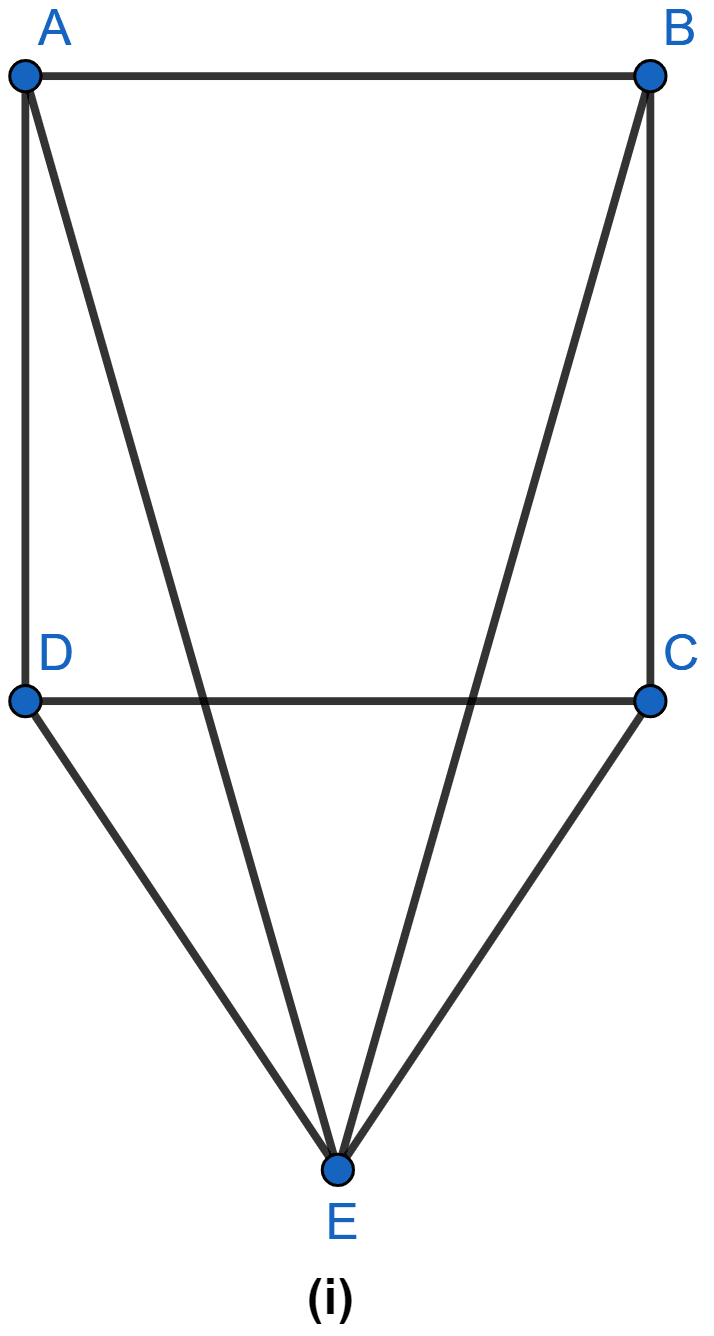Mathematics
In the figure (i) given below, CDE is an equilateral triangle formed on a side CD of a square ABCD. Show that △ADE ≅ △BCE and hence, AEB is an isosceles triangle.

Triangles
45 Likes
Answer
From figure,
∠ADE = ∠ADC + ∠CDE = 90° + 60° = 150°.
Similarly,
∠BCE = ∠BCD + ∠DCE = 90° + 60° = 150°.
⇒ ∠ADE = ∠BCE.
AD = BC (As sides of squares are equal)
DE = EC (As CDE is an equilateral triangle.)
∴ △ADE ≅ △BCE by SAS axiom.
We know that corresponding parts of congruent triangles are equal.
∴ AE = BE.
Hence, proved that AE = BE i.e. AEB is an isosceles triangle.
Answered By
19 Likes
Related Questions
ABC is an isosceles triangle in which AB = AC. P is any point in the interior of △ABC such that ∠ABP = ∠ACP. Prove that
(a) BP = CP
(b) AP bisects ∠BAC.
In the adjoining figure, D and E are points on the side BC of △ABC such that BD = EC and AD = AE. Show that △ABD ≅ △ACE.

In the figure (ii) given below, O is the point in the interior of a square ABCD such that OAB is an equilateral triangle. Show that OCD is an isosceles triangle.

In the adjoining figure, ABC is a right triangle with AB = AC. Bisector of ∠A meets BC at D. Prove that BC = 2AD.
